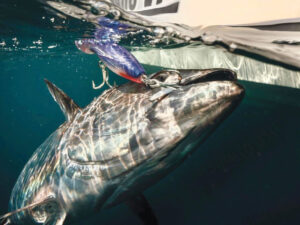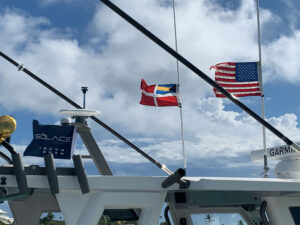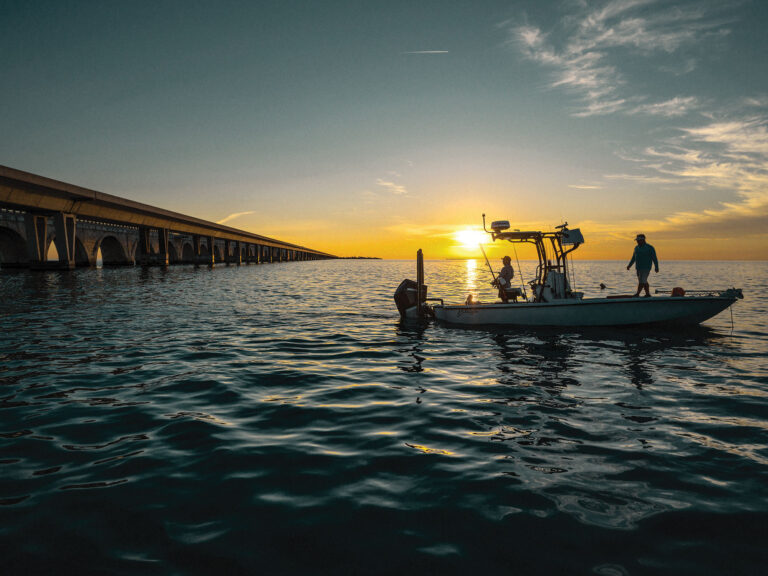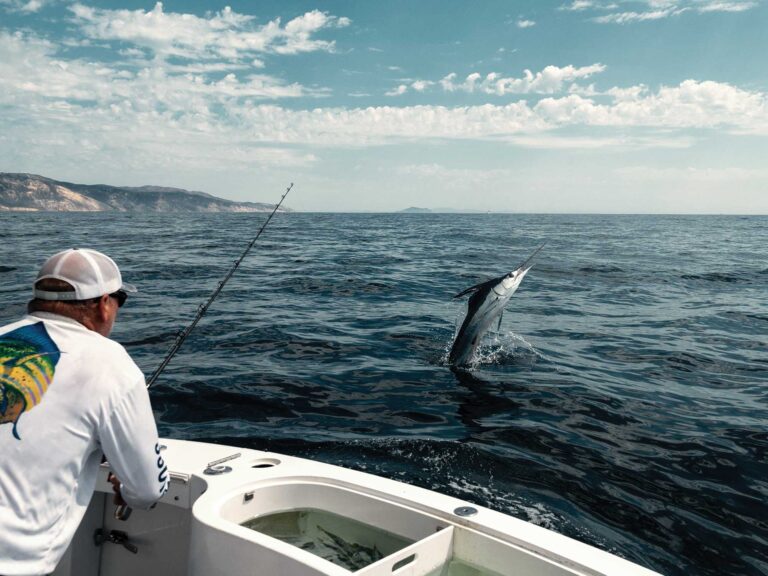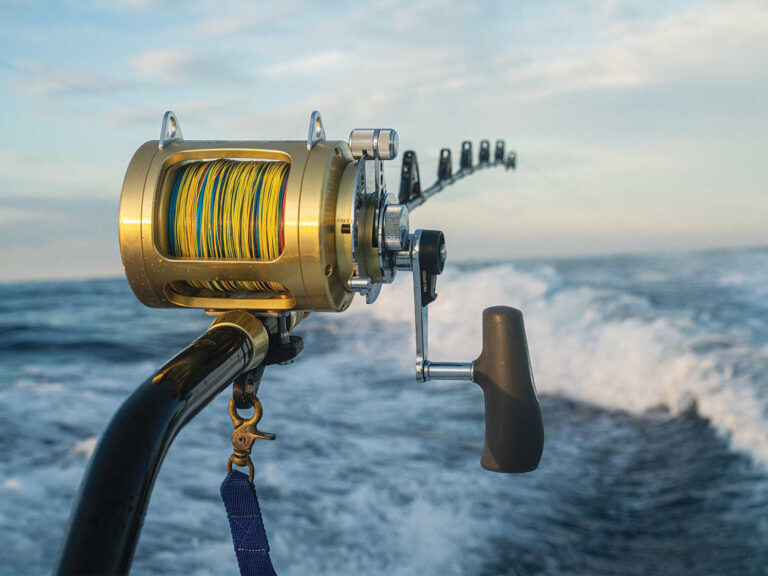Improvements in autopilots continue as this once-optional gear further cements its place at the helm of a proper fishing boat. Programmed trolling patterns have become the expected norm, and an autopilot’s ability to network with the plotter has automated effectively fishing bottom contours and tracing undersea features for productive trolling. Not only do you benefit from significant fuel savings, but the job gets done better and more efficiently. Same with covering distance in tough conditions.

Tough Conditions Made Easy
Ron Meng, president of Islands Marine Center on Lopez Island, Washington, is a confirmed autopilot user in a part of the world that knows how to dish out challenging conditions. “In 10- to 12-foot following seas, an autopilot steers better than I can,” he says. “It relieves the stress and saves fuel because you are aren’t wandering all over the place.” And when the fog rolls in, says Meng, the autopilot is immune to the kind of excessive and unnecessary course correction that plagues even experienced skippers when the visibility drops.
Competitive Redesign
Over the past couple of years, the major manufacturers have made big gains in their autopilot technology.
Raymarine’s SmartPilot series added a big helping of user- and installer-friendly features to the product category. Garmin’s redesign of the classic T-1 autopilot strengthened that model’s already considerable ca-pabilities and made it easier to use for fishermen with more on their minds than reading an instruction manual. Simrad’s innovative autopilot software made the unit nearly invisible at the helm and remarkably integrated with the plotter.

Furuno Upgrade
Currently Furuno is putting the final touches on an upgrade to the NavPilot 500: the NavPilot 700. The new pilot comes bundled with a PG-700 heading sensor and is compatible with other manufacturers’ multifunction displays and compasses via NMEA 0183 and 2000, says Iker Pryszo, assistant product manager for Furuno.
Two models are sized to fit helms big and small, and half-a-dozen pumps match any fishing boat, from a small outboard to a full-size sport-fisherman.
The new release includes an ex-panded library of preprogrammed trolling patterns and a beefed-up learning capability. “The 500 had a lot of fishing features developed that were well received, and these have been transferred to the new model,” says Pryszo. “A particular strength of the new models is that this is an adaptive-learning pilot. It takes a log of the sea states and information from the first sea trial and builds on it over the course of each outing. Every time you go out and use the autopilot, it is learning, so the more you use it, the better it gets.”
Furuno’s 700 series takes advantage of some of the features of rudderless feedback systems while maintaining the reliability, accuracy and commercial-grade components that Furuno is known for.

GeoNav Debut
The newest player in the United States, GeoNav entered the market with a sound autopilot as the backbone of its total suite of electronics. Much like Garmin purchased a proven system and built on it, Johnson Outdoors provided the GeoNav line with a proven autopilot with the purchase of the Italian Navicontrol.
“They had been building them for 25 years,” says GeoNav’s Bruce Angus. “The beauty of it from our point of view is it is a reliable and proven autopilot in Europe. We went directly to our first-generation redesign of the head, and we have not missed a beat. We are able to deliver a stable and good-running autopilot. It causes us no headaches, it’s very competitively priced, and it doesn’t break.”
The GeoNav pilot incorporates dual-station functionality, full duplication of features and a joystick control that provides instant hands-on control for jogging around obstacles and returning to a set course. Installation eliminates the traditional potentiometer and replaces it with a rotary transformer, the short version of which is that there are no parts to wear out. Outboard installation eliminates the mechanical feedback, and the unit instead relies on the linear feedback system of different manufacturers, such as Teleflex and others.
A Better Skipper
Capt. Sam Heaton of West Palm Beach, Florida, has given the GeoNav auto-pilot a good workout already.
“The great thing about the autopilot is it is much more precise than manual steering, which means I can get to a hole quicker than I can if I am steering the boat,” he says. “On a typical 30- to 40-mile run, I put my waypoint in, and it [the autopilot] gets me there quick, with less fuel burned. It takes a more direct line, and on a run to the Bahamas, it saves me six to 10 gallons of gas each way. Now that we are paying $5 a gallon at the marina, that makes a big difference.”
The autopilot’s handling simple helm-minding once Heaton reaches the fishing grounds also comes in handy. “I usually troll five lines, two on downriggers, two on the outriggers and a shotgun out the back,” he says. “If my lines are screwed up, and there are some days I don’t have the luxury of having a mate to handle them for me, the autopilot allows me to take care of that and keep fishing.”

